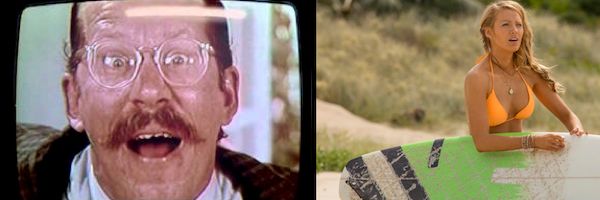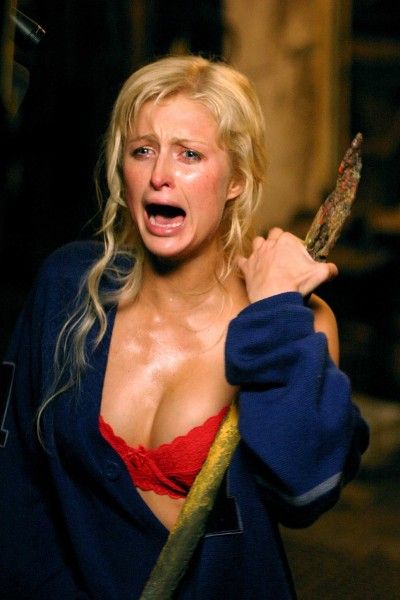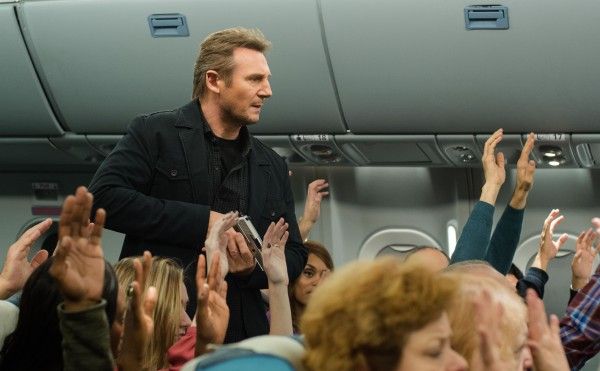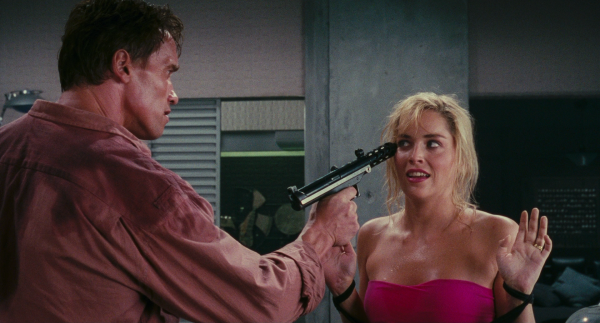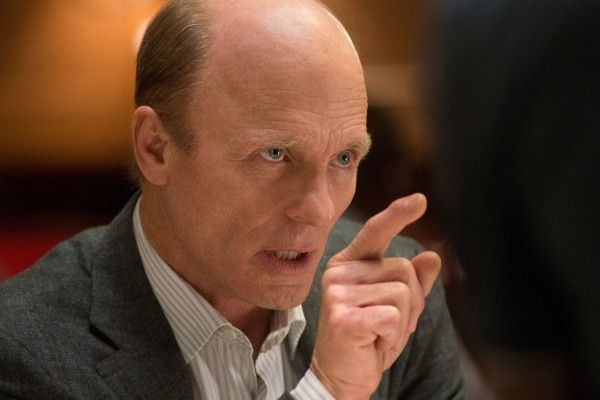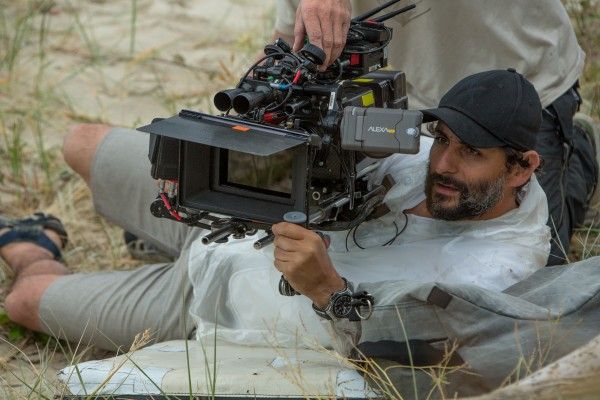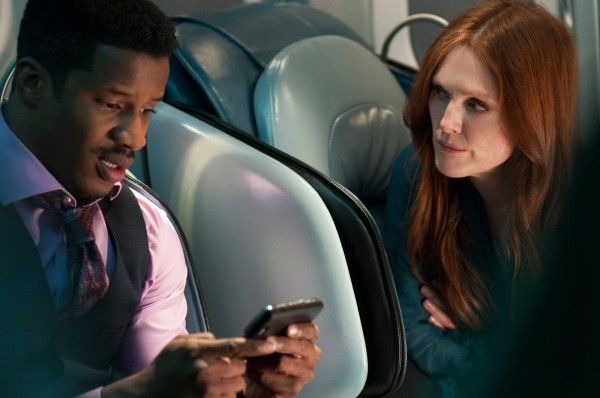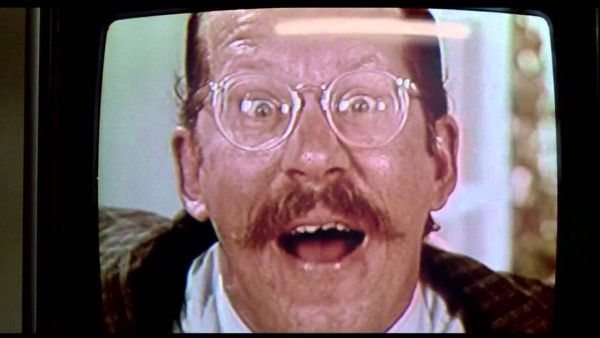Director Paul Verhoeven put the most unique personal stamp on Hollywood blockbusters from 1987-1997. Placing his id on hyper-drive, he embraced ultra violence and ultra sexuality with a spoonful of satire to help the medicine go down. That patented serum expressed itself in the corporate board room of extreme violence in RoboCop, the de-emasculation of a major masculine specimen in Total Recall, the uncrossed legs of the femme fatale in Basic Instinct, a stripper who received the googly-eyed A Star is Born treatment in Showgirls and the fascist military industrial complex that took on bug space invaders in Starship Troopers.
The Dutch filmmaker, who specialized in dream sequences and full frontal fears of rape and castration before answering the call from Hollywood, used commercials and video propaganda to replace his previous specialty of filming dreams (now focusing on new capitalist nightmares) and to confront America’s continued puritan complex about sex and nudity by presenting the body as no big deal (the casual three-breast ogling in Total Recall, the co-ed showers in Starship Troopers). He then juxtaposed it with a level of violence that US audiences were already growing desensitized to.
Post-Verhoeven, the thriller landscape has lacked a truly unique voice. We have seen some great action set pieces and careful construction of plots in the 21st century, for sure, but there hasn’t been a director that’s integrated a topical flair quite like Verhoeven did. As thrillers and blockbusters have closely hugged the PG-13 and oh-so-serious barrier, not many directors have dared to cross the double line, leaving myself, a huge Verhoeven fan, to wonder who might actually have the verve to take that baton.
When watching The Shallows it hit me. As the screen dived into various Blake Lively FaceTime’s and text message scrolls, which economically pushed the story beyond the secret beach the surfer found without ever having to leave it, it was another reminder that the man behind this camera has quietly become one of the most unique visual directors working in Hollywood. Jaume Collet-Serra hasn’t yet made a film close to the caliber that Verhoeven did in his decade-long tear, but he does make the case for being the best Diet Verhoeven soda pop we have. And there’s something exciting about that. The Spanish director hasn’t had a film cross over the $100 million domestic gross yet, but he has taken many basic genre films and imbued them with far more visual care than many of his contemporaries.
Collet-Serra’s career began in the horror genre, with his debut there were some early flashes of his careful eye in the occasionally lush—but ultimately lackluster—House of Wax. The horror remake is perhaps most well known for casting and killing Paris Hilton at the height of her popular-to-hate popularity, but the methods that Collet-Serra uses to reference her infamous sex tape are the earliest hints at his technological awareness. Yes, the first moment is blatant as it appears that she is giving her boyfriend road head as her friends drive in a separate car, recording with a handheld camera and laughing about it. But it’s the second time the handheld camera is pointed at Hilton that Collet-Serra punishes viewers for their compulsive voyeuristic disgust in watching the hotel heiress do anything on any video format: the killer removes the object that impaled her skull (while she's on her knees), while holding the video camera he swiped from the campsite.
Collet-Serra (and Hilton herself) knows that his audience is waiting to see how she is dispatched. The method of her death might get a laugh, but the debut filmmaker smartly took it one step further and forces the viewer to confront their ugly desire to see something grisly happen to her. For the gotcha blowjob, Collet-Serra uses the night vision setting of the camera, the same as her infamous sex tape did. But for the pulling of the bar through the back of her head, he uses the standard grainy zoom and lingers for an uncomfortable amount of time. It’s a nice mix of the found footage and reality television craze of 2005.
Enhancing throwaway moments via technology and media winks to make the most lasting impressions from a film is a quality that both Collet-Serra and Verhoeven have in common.
Verhoeven’s fixation on television and how we receive information was introduced in RoboCop. RoboCop featured newscasts that favored quick sensationalism before cutting to commercials for gas-guzzling cars, but Verhoeven also staged a scene where one of the cop killers stops outside a store to watch a sitcom on a wall of TVs. This is where the made up sitcom catch phrase, “I’d buy that for a dollar”—from a balding man squeezing two women—gets its final exclamation point before Verhoeven pushes the consumer’s desire for violence to the most extreme places.
Video playback is also how Verhoeven would set up his worlds in Total Recall and Starship Troopers (via informational segments created for memory implantation in Recall and nationalist indoctrination segments in Troopers), and speaks to the voyeurism that’s inherent to the murder investigation in Basic Instinct (via the filmed interrogation of a female suspect in a series of sex murders).
Similar to how Verhoeven was able to use video segments to relay extra information using the same method that audiences were receiving information at the time, Collet-Serra has been able to use cell phones, the screen that people most receive information from now, better than any other director of the moment.
Collet-Serra does not cut to the device, instead both text messages and FaceTime phone calls appear on the screen in both Non-Stop and The Shallows. The appearance on the screen is similar to the pop culture non-phenomenons of VH1’s Pop-Up Video and the 90’s Blind Date, but Collet-Serra uses it to great effect. Similar to Verhoeven’s use of world-building video segues, information received on the phone pushes the plot forward visually in a method that we all use daily. Most importantly, by having the messages appear on the screen, Collet-Serra doesn’t have to cut from his performer. We see Liam Neeson pace as he awaits the newest text from the terrorist in Non-Stop (and also when passengers turn their phone cameras on him to relay messages to news outlets), we see Lively become restless as she talks to her family in The Shallows. And we never have to leave either space, the beach in The Shallows and the airplane of Non-Stop, thus enhancing the hopelessness of each situation. Neeson has to solve the terrorist threat on his own without cutting to the air control tower to show us any assistance or resistance that he might receive. Similarly, Lively has to save herself after a shark attack, and by keeping her phone calls and texts contained to what is in her hand, the direness of the situation is more strongly felt because Collet-Serra does not cut to show her family waiting to hear from her.
In Non-Stop, Collet-Serra is also delightfully able to tap into the extra suspense of the typing “…” that we all have experienced. Whether it’s coming from a new love pursuit or an argument that’s happening via text, Collet-Serra knows that everyone in the audience has stared at those three dots and come up with multiple things in our heads about what it might be as we patiently wait. And he pauses to get extra suspense from that, instead of just going for the message.
Let’s not kid ourselves, though, it’s much more than cell phones that’s made Collet-Serra a great visual director. After Taken made Neeson a gruff action star, Collet-Serra’s perhaps utilized him best because he adds impotency and hesitation to his hyper-masculinity. Similar to how Verhoeven took a hulking Arnold Schwarzenegger and introduced him as a dissatisfied construction worker who is married to a dismissive wife (Sharon Stone) and visits Rekall to implant adventure scenarios with a programmed “sleazy” companion, Collet-Serra’s first collaboration with Neeson, Unknown, positions him as a scientist who is largely unable to fight off attackers after suffering amnesia from a car accident. In Unknown, Neeson’s only memories of his wife (January Jones) are not quiet moments of glances or candlelit dinners, but instead all he can recall about his wife are the shower fuck sessions. After introducing both Schwarenegger and Neeson as the exact opposite of to the badasses we’re accustomed to seeing them as (with some sexual fantasies on their brain), both director’s plots concern how they re-learn that they do indeed have “a very particular set of skills.”
Collet-Serra’s two subsequent films with Neeson are two of the finest Neeson actioners. In addition to keeping the tension of Non-Stop in one confined area, Collet-Serra heightens the hostage situation by showing how real-time media information causes a level of panic in the passengers that Neeson is carefully attempting to calm. That the panic comes after the media—streaming on the plane—reports that Neeson’s air marshal has hijacked the plane is a functional reminder for how media consumption informs guilt immediately, and is culpable in stirring up a sense of constant paranoia and distrust of government officials. And Run All Night offers a fatigued Neeson who knows that his action movies might be running on fumes, and casts him as a former gangster enforcer who will do anything for money now, including wearing a Santa suit while making dick jokes and burning his hand on the fireplace. For both Verhoeven and Collet-Serra there’s a particular joy in neutering their heroes at the start and asking them to earn their manhood back in the particular movie they’re making. By their rules, not off their previous films.
If there’s anything that’s holding back Collet-Serra from being a great director, it has more to do with scripts that are immensely over-plotted and can’t stick their landing. After careful construction of scenarios and great supporting character beats—Collet-Serra should be commended for allowing supporting characters such as Bruno Ganz in Unknown, Ed Harris in Run All Night and Sully the seagull(!) in The Shallows have specific beats that don’t push the narrative forward, but instead remind us that these actioners have humans in them—most of his films can’t stick the landing.
For instance, there’s an over-explanation of the terrorist’s motive in Non-Stop (and too cute of a final moment with Julianne Moore) and a completely unnecessary epilogue in The Shallows (regardless, the film remains the most fun film of the summer). There’s a tacked on happy ending to everything on his filmography, save Orphan (which I’ll applaud that Collet-Serra makes sure you know that its killer is definitely dead and will not come back for a sequel; a true rarity). But this epilogue issue doesn’t feel like a satire of Hollywood endings, a la how Fritz Lang would routinely add to his noir films to get proper distribution, and instead always feels rushed.
Working in the B-thriller genre, Collet-Serra has revealed himself to not be the usual director for hire that gets this work. And after a decade, he does deserve the auteur treatment as patterns in his style are beginning to emerge. There is a surface sheen that goes beyond great storyboarding and reveals a filmmaking obsession with how digital screens—whether it’s a cell phone, grainy security footage, airplane screens, a digital camcorder or a surfer’s GoPro camera—provide life and death information with less clarity than what the high definition cinematic image can provide. When I had the chance to interview him and Collet-Serra said that changing his color pallet was the biggest appeal for The Shallows, it should be exciting for blockbuster cineastes to know that attempting new visuals and colors is a primary goal of his.
The Shallows has received the best reception of his career. Imagine what he could do with a plunge into the deep end? Perhaps he could the lampooning actioner that we desperately need NOW. Just like the 90s needed Verhoeven.

